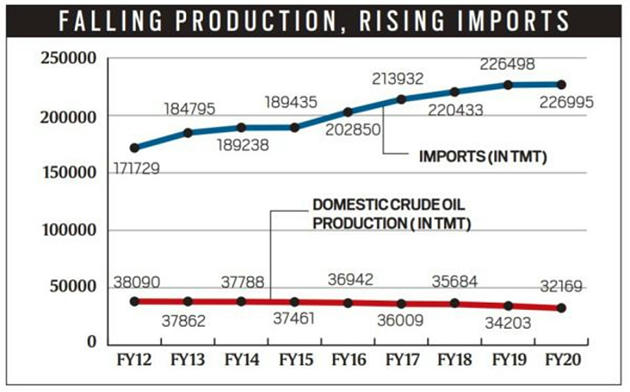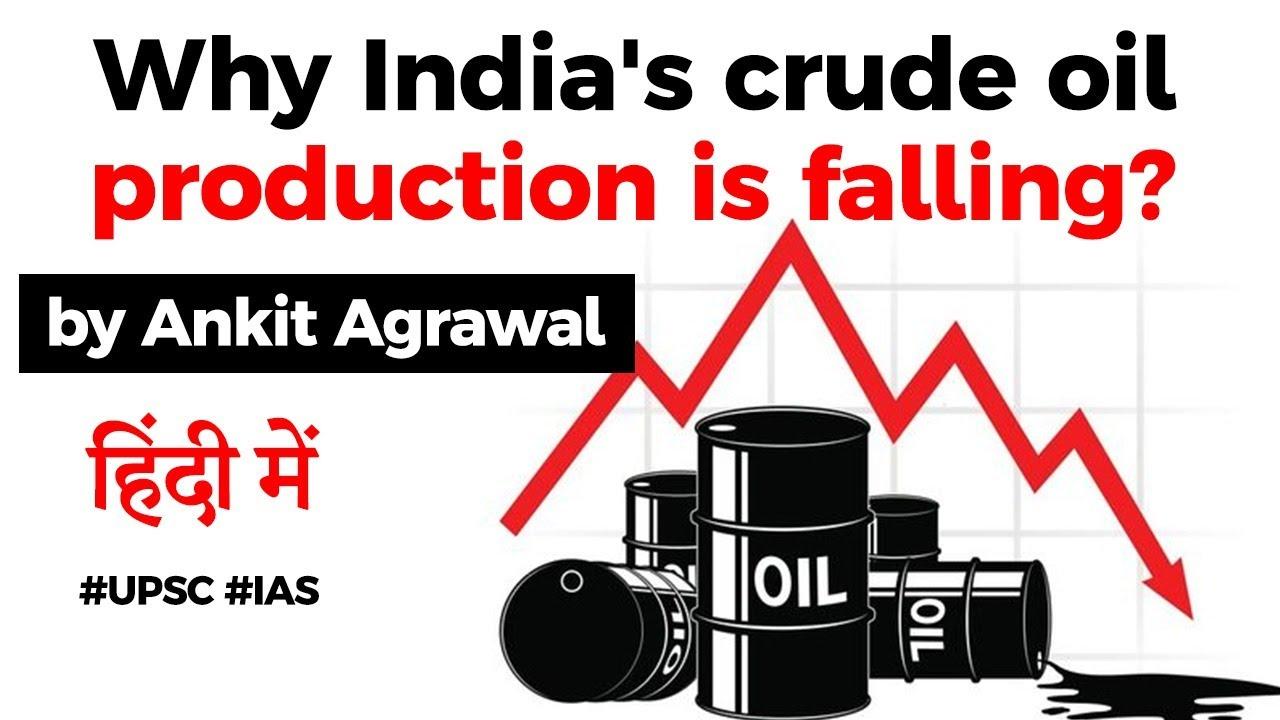Table of Contents
Context
- India’s crude oil production fell 7.1% in May 2020 compared to May 2019 on the back of low demand due to the Covid-19
- Domestic production of crude has, however, been falling every year since FY 2012.
- Annual crude oil production has fallen at a compounded annual rate of 2.1% since to 32,169.3 thousand Metric Tonnes (TMT) in FY 2020 from 38,089.7 TMT in FY 2012.
- This has led to a steady climb in the proportion of imports in domestic crude oil consumption from 81.8% in 2012 to 87.6% in 2020.

Why there is continuous fall in production?
- Experts say that most of India’s crude oil production comes from aging wells that have become less productive over time.
- A lack of new oil discoveries in India coupled with a long lead time to begin production from discovered wells.
- The output of these aging wells is declining faster than new wells can come up according to experts.
- Domestic exploration companies are attempting to extend the life of currently operational wells.
Who dominates the crude oil production?
- Crude oil production in India is dominated by two major state-owned exploration and production companies, ONGC and Oil India.
- These companies are the key bidders for crude oil block auctions and end up acquiring most of the blocks that are put up for auction in India.
Why there is lack of interest from private players?
- It is because of long delays in the operationalisation of production even after an oil block is allotted due to delays in approvals.
- Some of the key approvals which are required to begin production include-
- Environmental clearances and
- Approval by the Directorate General of Hydrocarbons after the allottee completes a seismic survey and creates a field development plan.
- “The best-case scenario from allotment to production is at least 5-7 years”
Policy changes Required?
- Existing public and private sector players have asked for reduced levies of oil production including oil cess, royalties, and profit petroleum especially when crude oil prices are below $45/barrel.
- Experts say the requirement to pay royalties to the government at low crude prices can make it unviable for these companies to invest in further exploration and production.
Open Acreage Licensing Programme (OALP)
- The government introduced this in 2019 to allow companies to carve out blocks that they are interested in and with lower royalties and no oil cess.
- Chinese government offered a floor price to oil producers insulating them somewhat from any sharp falls in international crude prices.
- This kind of policy at least allows for a company to have a fixed worst-case scenario for the sale of crude oil which incentivises more investment in exploration and production.
Latest Burning Issues | Free PDF






















 WhatsApp
WhatsApp